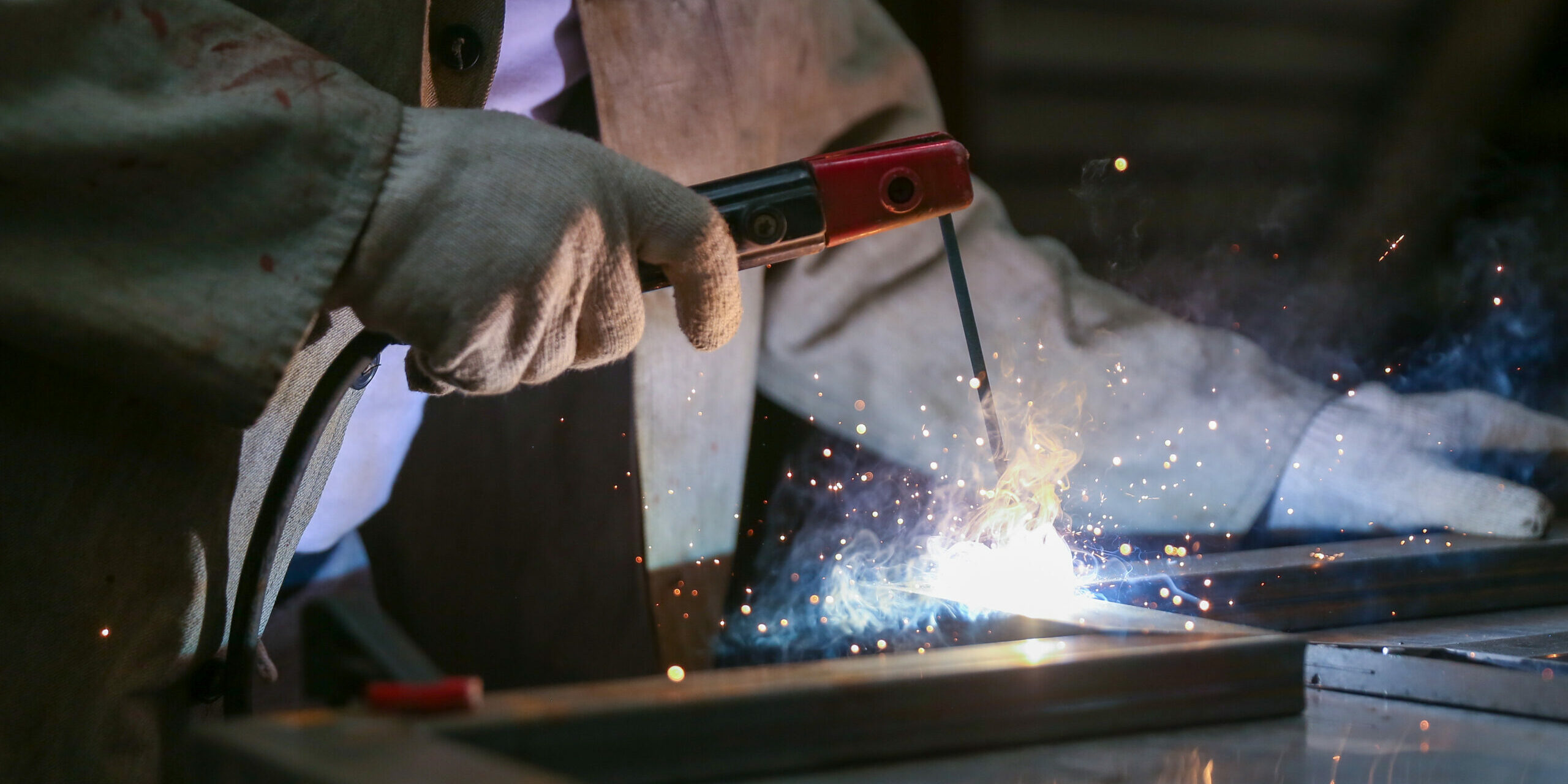Welding is a versatile and essential skill that opens doors to various industries. For beginners willing to enter the world of welding, it is essential to understand the basics and take the right approach. This article aims to provide a comprehensive guide on the best way to get started in the art of welding, covering essential tools, safety measures and welding techniques suitable for beginners.
Understanding the Basics of Welding
Before picking up a welding torch, it is crucial to understand the fundamental concepts of welding. Research the various welding processes available, such as MIG (Metal Inert Gas), TIG (Tungsten Inert Gas), and Stick welding. Learn their applications, advantages, and limitations. This knowledge will help you make an informed decision about which welding technique best suits your needs and projects, and you will choose the one that aligns with your interests.
Investing in the Right Welding Equipment
Acquiring the right equipment is a pivotal step for beginners. Start with a welding machine appropriate for your chosen welding process. MIG welders are often recommended for beginners due to their ease of use. Additionally, safety gear is equally important, including a welding helmet with a proper auto-darkening lens, welding gloves, and flame-resistant clothing. Do not forget to purchase quality welding electrodes, wire, or filler material depending on the welding method you have chosen.
When choosing welding equipment and safety gear, remember to consider factors such as the specific type of welding you will be doing, the materials you will be working with, and your estimated budget.

Additionally, customer reviews and expert recommendations can provide valuable insights into the performance and durability of different products. It is always a good idea to consult with experienced welders or professionals for personalized advice based on your specific needs.
Setting Up Your Workspace
Establishing a safe and organized workspace is crucial for successful welding projects. Ensure proper ventilation to prevent inhaling harmful fumes, work in a well-lit area to enhance visibility and have a fire extinguisher nearby.
Keep your workspace organized and clutter-free; this will allow you to maintain a clear path for easy movement, focus on your welds without any distractions and minimize potential hazards.
Mastering Safety Protocols
Safety should always be a top priority in welding. Understand the potential risks associated with welding (such as UV radiation, sparks, and metal fumes), and always follow safety guidelines to protect yourself from injuries.
You need to wear the necessary personal protective equipment (PPE), including a welding helmet, safety glasses, gloves, and flame-resistant clothing. Regularly inspect and maintain your equipment to ensure it functions safely.
Practicing Welding Techniques
Like any skill, practice is key to becoming proficient in welding. Start with simple projects to develop your skills and gradually progress to more complex ones as you gain confidence.
Focus on maintaining a steady hand, controlling the welding speed, and achieving consistent weld beads. Experiment with different joint types and positions to broaden your skill set. Consider taking welding classes, recording your welds, watching online tutorials, and seeking feedback from the community to identify areas for improvement while enhancing your skills.
Troubleshooting Common Issues
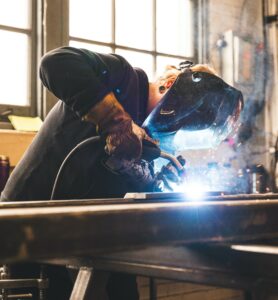
Welding often comes with challenges, especially for beginners. Understanding how to solve common obstacles is essential.
Learn to identify, recognize, and address welding defects such as porosity, spatter, and inconsistent welds. This troubleshooting ability will empower you to refine your technique and produce higher-quality welds.
Refer to welding resources, manuals, or seek advice from experienced welders when encountering difficulties.
Joining Welding Communities (from Beginners to Professional experts)
Connect with other fellow welding enthusiasts and professionals through online forums, attending workshops, or participating in local welding events.
Engaging with a community provides an opportunity to share experiences, seek advice, and learn from others. Networking with experienced welders can offer valuable insights, tips, and guidance as you progress in your welding journey and continue to improve your skills.
Seeking Further Education and Welding Training
Welding is serious business. If you are premeditated about advancing your welding skills, consider enrolling in formal welding courses or apprenticeships.
These programs provide structured learning experiences, hands-on training, and expert guidance. Formal education and welding courses can deepen your understanding of welding techniques, safety practices, and industry standards, paving the way for a more successful and fulfilling welding career.
For those looking to take their welding skills to the next level
You need to start practicing if you want to learn how to weld. As a new task, that can be a bit frightening. Furthermore, until you are provided with the necessary materials, you cannot practice, which can also be frustrating and expensive. A welding simulator is a perfect solution to get on board in the art of welding. You can practice in Augmented Reality until the competencies needed are acquired to pass into a real environment.
Soldamatic offers superior training and the improved development of skills. The calibration of this welding simulator involves examining welding procedures within a real-world setting, employing diverse scenarios to generate extensive and informative datasets.
To achieve the goal, this solution includes the hardware such as real torches by Abicor Binzel, welding gloves, and the mask; and the software based on based on photorealism and physical rendering (PBR) from real practices. Furthermore, there are international courses available to install in your unit from well-known welding associations.
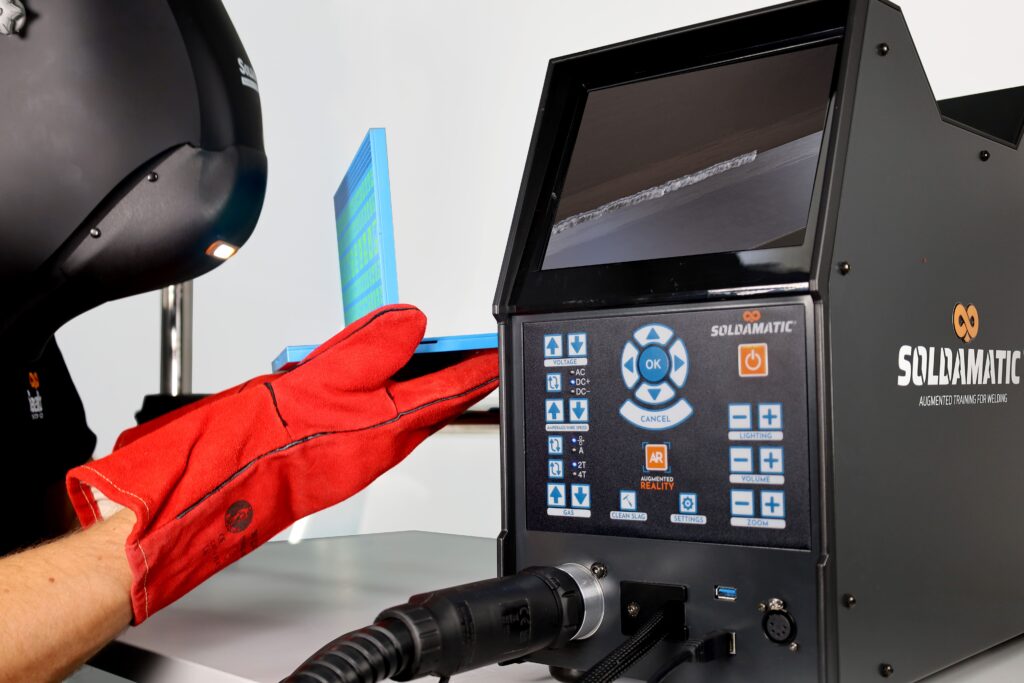
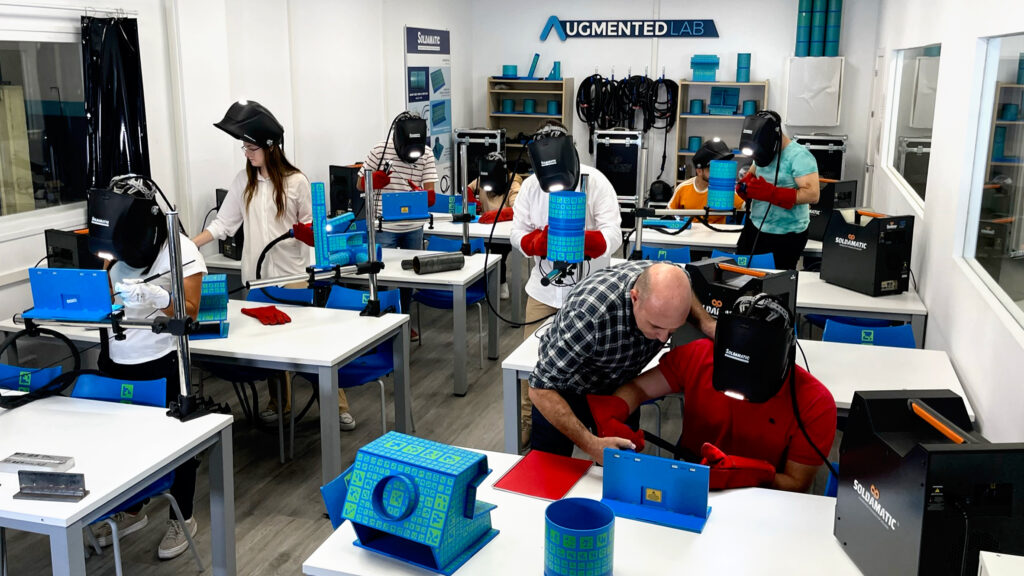
With Soldamatic, you have endless possibilities of welding exercises, allowing you to explore new joints, processes, positions… By this method, you can combine simulation with real practices to keep expanding your limits!
The system also replicates a cross-section and overlays a visual representation of the mechanical resistance, enabling the analysis of the welding bead value at each chosen point. Thanks to the bend test, you can accurately evaluate the strength of a weld right after its creation. You can watch in real-time a replay of the practice right after the execution: Something that you cannot easily do in a real workshop.
For a better evaluation, all your performance will be displayed in your “student profile” through the e-learning tool. With this Augmented Reality simulator, you will master the creation of weld beads!
As a summary, Seabery has enhanced the incorporation of authentic graphics, simultaneously introducing a real-time guide aimed at assisting beginners in learning.
Welding for Beginners: Skills take Practice!
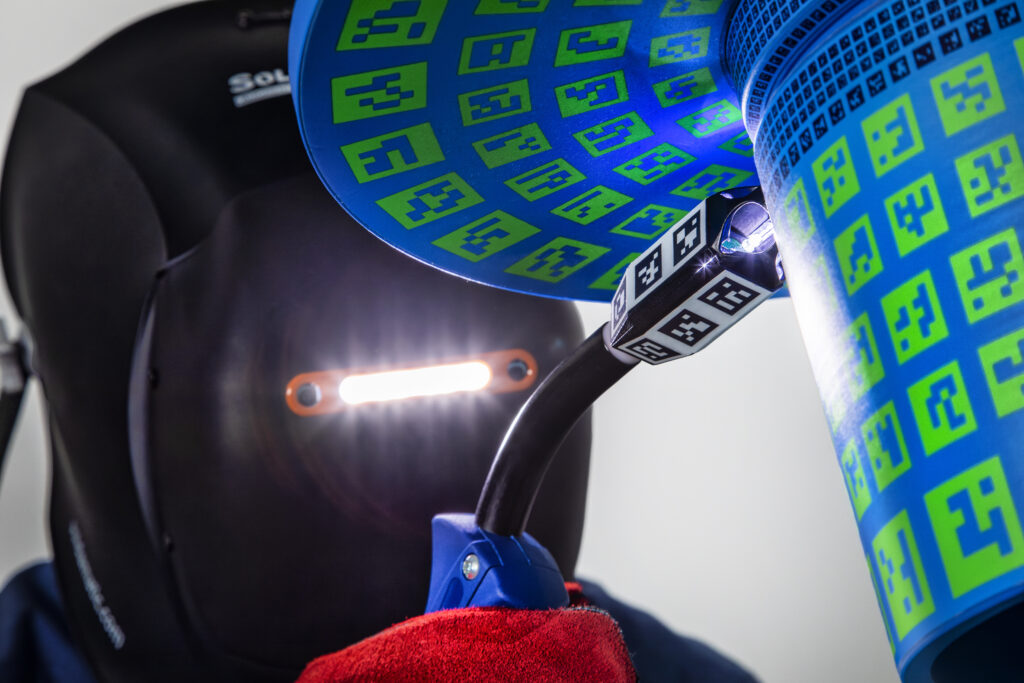
Considering it as a potential career path, the key is to start small, be patient, and enjoy the process of mastering this invaluable skill.
Boarding on the art of welding as a beginner requires a combination of knowledge, practice, and dedication. You can lay a solid foundation for a rewarding journey into the world of welding by understanding the basics, investing in the right equipment, prioritizing safety, and seeking continuous improvement.
Seabery, a global leader in creating simulation-based solutions for both industrial and educational applications.





